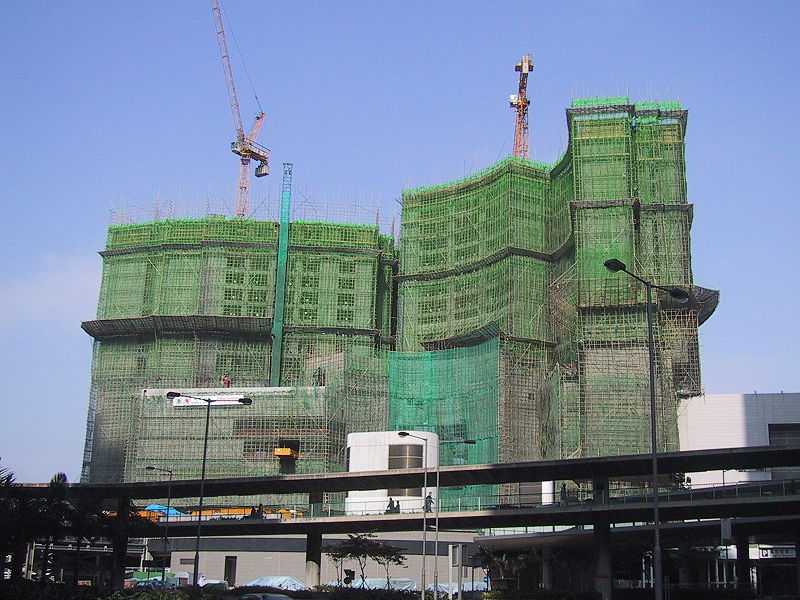
In today’s world, sustainability is a paramount concern, especially in the construction industry. As we face environmental challenges, the need to adopt eco-friendly practices in construction has become imperative. Sustainable construction materials are gaining traction due to their ability to reduce environmental impact, conserve natural resources, and improve the overall efficiency and durability of buildings. Therefore, here are a few things you need to know about some of the most sustainable materials employed in modern construction, shedding light on their benefits and contribution to a greener future.
Wood
Wood, often hailed as nature’s own building material, boasts a rich history and unmatched sustainability in the realm of construction. As one of the earliest materials utilized by humankind, wood continues to be a fundamental choice due to its renewable nature and biodegradability. Its production demands relatively less energy compared to the manufacturing of alternative building materials, rendering it a greener option. Moreover, properly managed forests ensure a consistent and ample supply of timber, thus positioning wood as an environmentally friendly choice for a diverse array of construction applications.
Bamboo
Bamboo, characterized by its rapid growth and abundant availability, stands as a remarkable sustainable material with immense potential in construction. Its strength and versatility allow for its utilization in both structural and decorative capacities, offering a wide range of applications. Given its short growth cycle and minimal environmental impact, bamboo emerges as an eco-conscious alternative to conventional building materials, presenting a promising avenue toward sustainable construction practices that align with our environmental aspirations.
Recycled concrete
In the realm of sustainable construction, recycled concrete is fast gaining popularity and recognition for its ability to repurpose waste from demolished buildings or construction sites. Through the process of crushing and repurposing old concrete into aggregate, recycled concrete not only minimizes waste but also diminishes the necessity for mining new materials. This, in turn, fosters a circular economy and reduces the environmental footprint associated with construction activities, making recycled concrete a key player in sustainable building practices.
Straw bales
Straw bales, often regarded as a traditional building material, are experiencing a resurgence in modern sustainable construction practices. Derived from an abundant agricultural byproduct, straw can provide exceptional insulation when tightly bound, offering energy-efficient benefits. Incorporating straw bales into building construction effectively reduces energy consumption for heating and cooling, contributing to a more energy-efficient and sustainable approach to building design and implementation.
Steel as a sustainable construction material
Recycled steel holds a prominent position as a sustainable material within the construction industry, admired for its remarkable ability to be recycled indefinitely without compromising its structural integrity. This attribute makes it a truly eco-friendly choice, significantly reducing the demand for raw iron ore and curbing energy consumption and greenhouse gas emissions. As a result, the utilization of recycled steel in construction, especially after the practical stainless steel polishing process that can help it look better than ever, plays a pivotal role in our collective efforts to adopt greener practices and build a more sustainable future.
Reclaimed or salvaged wood
Reclaimed or salvaged wood represents another ecologically responsible choice for construction projects, gaining traction for its environmentally conscious sourcing. Utilizing wood from deconstructed buildings, old barns, or other structures helps mitigate the need for fresh harvesting and processing of timber. Beyond its positive environmental impact, reclaimed wood brings with it a unique aesthetic appeal and historical value to the structure, blending sustainability with a sense of heritage and character.
Rammed earth
In recent years, there has been a notable resurgence of interest in rammed earth, an age-old construction technique steeped in history and tradition. This renaissance is primarily fueled by the contemporary emphasis on sustainability within the construction industry. Rammed earth, at its core, involves the careful compaction of natural raw materials such as earth, chalk, lime, or gravel within a structured formwork, resulting in exceptionally robust walls. These walls, not only exude a sense of timeless craftsmanship, but also exhibit impressive thermal mass, energy efficiency, and unparalleled longevity. Therefore, it is not surprising that rammed earth structures are increasingly being considered a prime choice in sustainable construction, aligning harmoniously with the core tenets of sustainable building practices.
The construction industry plays a vital role in our efforts to build a more sustainable future. By embracing eco-friendly materials, we can significantly reduce our environmental impact while constructing durable and efficient buildings. The adoption of sustainable construction materials is a crucial step towards creating a harmonious balance between human development and environmental preservation.
- SEO Powered Content & PR Distribution. Get Amplified Today.
- PlatoData.Network Vertical Generative Ai. Empower Yourself. Access Here.
- PlatoAiStream. Web3 Intelligence. Knowledge Amplified. Access Here.
- PlatoESG. Carbon, CleanTech, Energy, Environment, Solar, Waste Management. Access Here.
- PlatoHealth. Biotech and Clinical Trials Intelligence. Access Here.
- Source: https://usgreentechnology.com/greener-future-sustainable-construction-materials-for-2024/
- :has
- :is
- :not
- 2024
- a
- ability
- About
- abundant
- activities
- adopt
- Adoption
- After
- age-old
- aggregate
- Agricultural
- align
- aligning
- allow
- also
- alternative
- an
- and
- Another
- appeal
- applications
- approach
- ARE
- Array
- AS
- associated
- At
- availability
- Avenue
- Balance
- Bamboo
- BE
- become
- been
- being
- benefits
- Better
- between
- Beyond
- blending
- boasts
- both
- bound
- Brings
- build
- Building
- Building Materials
- but
- by
- CAN
- capacities
- careful
- challenges
- character
- characterized
- choice
- circular economy
- Collective
- COM
- compared
- compromising
- Concern
- concrete
- conscious
- considered
- consistent
- constructing
- construction
- consumption
- contemporary
- continues
- contributing
- contribution
- conventional
- Core
- Creating
- crucial
- curbing
- cycle
- Demand
- demands
- Derived
- Design
- Development
- diverse
- due
- durability
- earliest
- earth
- Eco-conscious
- Eco-friendly
- economy
- effectively
- efficiency
- efficient
- efforts
- embracing
- emerges
- Emissions
- emphasis
- employed
- energy
- Energy Consumption
- energy efficiency
- ensure
- environmental
- environmentally
- environmentally friendly
- especially
- EVER
- exceptional
- exceptionally
- exhibit
- experiencing
- Face
- FAST
- few
- Footprint
- For
- fosters
- fresh
- friendly
- from
- fueled
- fundamental
- future
- gaining
- GAS
- given
- greener
- greenhouse gas
- Greenhouse gas emissions
- Growth
- Harvesting
- help
- helps
- here
- heritage
- historical
- history
- holds
- HTTPS
- human
- immense
- Impact
- imperative
- implementation
- impressive
- improve
- in
- incorporating
- increasingly
- industry
- integrity
- interest
- into
- involves
- IT
- ITS
- jpg
- Key
- key player
- Know
- less
- light
- Lime
- longevity
- Look
- MAKES
- Making
- managed
- manufacturing
- Mass
- material
- materials
- minimal
- minimizes
- Mining
- Mitigate
- Modern
- more
- Moreover
- most
- Natural
- Nature
- necessity
- Need
- New
- notable
- of
- offering
- often
- Old
- on
- ONE
- only
- Option
- or
- Other
- our
- overall
- own
- Paramount
- pivotal
- plato
- Plato Data Intelligence
- PlatoData
- player
- plays
- popularity
- position
- positioning
- positive
- potential
- practices
- preservation
- primarily
- Prime
- process
- processing
- Production
- projects
- prominent
- promising
- properly
- provide
- range
- rapid
- Raw
- realm
- recent
- recognition
- reduce
- reduces
- reducing
- regarded
- relatively
- remarkable
- Renaissance
- rendering
- Renewable
- represents
- Resources
- responsible
- result
- resulting
- Rich
- robust
- Role
- sense
- Short
- significantly
- Sites
- some
- Sourcing
- Stainless Steel
- stands
- steel
- Step
- strength
- structural
- structure
- structured
- structures
- such
- supply
- surprising
- Sustainability
- sustainable
- sustainable future
- technique
- tenets
- than
- that
- The
- their
- There.
- therefore
- thermal
- These
- things
- this
- Through
- Thus
- tightly
- timeless
- to
- today’s
- toward
- towards
- traction
- tradition
- traditional
- truly
- TURN
- unique
- unmatched
- unparalleled
- utilized
- Utilizing
- value
- versatility
- vital
- Waste
- we
- when
- while
- wide
- Wide range
- with
- within
- without
- wood
- world
- years
- you
- zephyrnet






